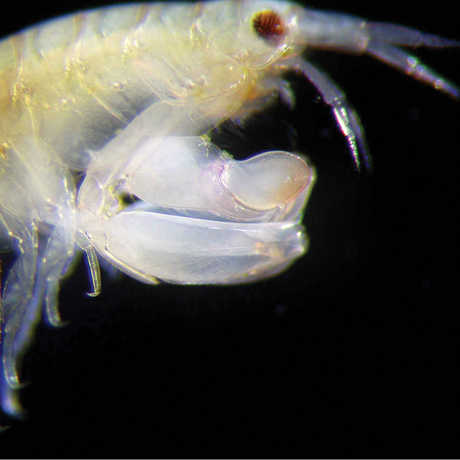Science News
New Discoveries: A Titi, Anglerfish, and a Tiny Frog
Welcome to a new Science Today series highlighting new species discoveries. A written collaboration from Stanford and Academy scientists and staff, this post will appear on the second and forth Wednesday every month.
Nothing beats the joy of discovery. Surprisingly, somewhere on Earth a scientist is finding a new species every day. Our “New Discoveries” series celebrates what people uncover, highlighting the new species that have just been found, the places they were discovered, and what makes them unique.
The excitement of discovering new species provides an antidote to all of the negative press about a biodiversity crisis. Media reports rightly emphasize the dangers that animals and plants face around the world today. At the same time, by embracing new life, whether from a rainforest, the oceans, or even someone's back yard, we are more likely to value and save it. We hope that you feel the same way.
New Titi Monkey
New discoveries tend to be smaller creatures or marine animals, but this month a new primate species was described: the Urubamba brown titi, Callicebus urubambensis. About the size of a house cat, these new monkeys are actually quite common in a large, remote area of the Peruvian Amazon, and appear to be safe from hunters and other potential threats. The Urubamba brown titi is distinguished from its titi brethren (there are thirty-some titi species) by its dark coloration. Could more titi monkey discoveries emerge in the near future? Absolutely, says Stephen Ferrari in New Scientist. “A few decades ago, only five titi species were known. I think many more will be discovered as we explore southern Amazonia’s biologically uncharted forests.”
From the Deep
Looks may not matter if you live thousands of meters below the ocean’s surface. Take the newly discovered anglerfish from the genus Lasiognathus. Found in the depths of the Gulf of Mexico’s northern region, this new species is “down-right scary looking,” according to Discovery News. With a spiky head and teeth, it also has the typical anglerfish lure appendage, but this one looks like there’s a tiny fish at the end of it. Unsuspecting prey watch out! This new discovery was published earlier this month in the journal Copeia.
To the Mountain Tops
A teeny frog, Noblella madreselva, was described earlier this month in Zookeys. Discovered in the high, humid mountain forests of the Peruvian Andes, these amphibians are only several millimeters long, with black and white markings on their chests and bellies. The frogs are active in the daytime, but hide in the leaf litter of the forest floor, making them nearly impossible to detect. Still, the Peruvian and American scientists that made the discovery are concerned for their survival, given the threats to the forest they inhabit. With their limited range, the team writes, “The main threats faced by N.madreselva are habitat loss and modification associated with agricultural activities in the region, which are primarily dominated by cultivation of coffee, tea and other crops… It is therefore imperative to document the highly endemic amphibian faunas of wet montane Andean forests as a first step towards designing a network of natural reserves that maximizes protection of amphibian biodiversity.”
From the depths of the sea to the peaks of the Andes, each new species helps us appreciate how much more remains to be discovered. And the more species we understand, the more we can fight to protect their habitats—perhaps saving some of those that remain unknown.
Images: Titi, Proyecto Mono Tocón; Anglerfish, Theodore Pietsch; New frog, Vanessa Uscapi
Rob Jackson is a professor of earth sciences at Stanford University. He travels the world for his job, from the rainforests of Peru to the deserts of South Africa and Patagonia.





